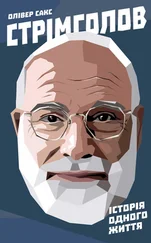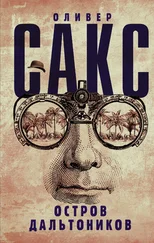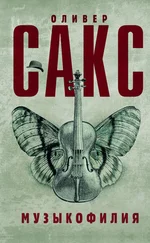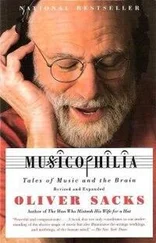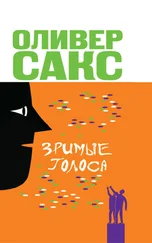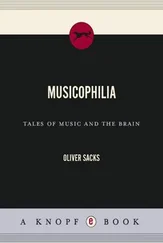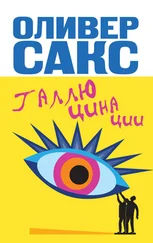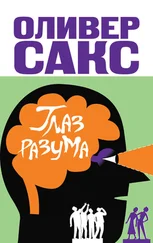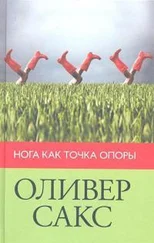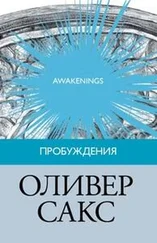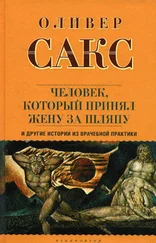Because it had four strikingly different valencies or oxidation states, and it was easy to transform these into one another, vanadium was an ideal element to experiment with. The simplest way of reducing vanadium was to start with a test tube full of (pentavalent) ammonium vanadate in solution and add small lumps of zinc amalgam. The amalgam would immediately react, and the solution would turn from yellow to royal blue (the color of tetravalent vanadium). One could remove the amalgam at this point, or let it react further, till the solution turned green, the color of trivalent vanadium. If one waited still longer, the green would disappear and be replaced by a beautiful lilac, the color of divalent vanadium. The reverse experiment was even more beautiful, especially if one layered potassium permanganate, a deep purple layer, over the delicate lilac; this would be oxidized over a period of hours and form separate layers, one above the other, of lilac divalent vanadium on the bottom, then green trivalent vanadium, then blue tetravalent vanadium, then yellow pentavalent vanadium (and on top of this, a rich brown layer of the original permanganate, now brown because it was mixed with manganese dioxide).
These experiences with color convinced me that there was a very intimate (if unintelligible) relation between the atomic character of many elements and the color of their compounds or minerals. The same color would show itself whatever compound one looked at. It could be, for example, manganous carbonate, or nitrate, or sulfate, or whatever – all had the identical pink of the divalent manganous ion (the permanganates, by contrast, where the manganese ion was heptavalent, were all deep purple). And from this I got a vague feeling – it was certainly not one that I could formulate with any precision at the time – that the color of these metal ions, their chemical color, was related to the specific state of their atoms as they moved from one oxidation state to another. What was it about the transition elements, in particular, that gave them their characteristic colors? Were these substances, their atoms, in some way ‘tuned’? [10] Such thoughts about ‘tuning’, I was later to read, had first been raised in the eighteenth century by the mathematician Euler, who had ascribed the color of objects to their having ‘little particles’ on their surface – atoms – tuned to respond to light of different frequencies. Thus an object would look red because its ‘particles’ were tuned to vibrate, resonate, to the red rays in the light that fell on it: The nature of the radiation by which we see an opaque object does not depend on the source of light but on the vibratory motion of the very small particles [atoms] of the object’s surface. These little particles are like stretched strings, tuned to a certain frequency, which vibrate in response to a similar vibration of the air even if no one plucks them. Just as the stretched string is excited by the same sound that it emits, the particles of the surface begin to vibrate in tune with the incident radiation and to emit their own waves in every direction. David Park, in The Fire Within the Eye: A Historical Essay on the Nature and Meaning of Light , writes of Euler’s theory: I think this was the first time anyone who believed in atoms ever suggested that they have a vibrating internal structure. The atoms of Newton and Boyle are clusters of hard little balls, Euler’s atoms are like musical instruments. His clairvoyant insight was rediscovered much later, and when it was, nobody remembered who had it first.
* * *
A lot of chemistry seemed to be about heat – sometimes a demand for heat, sometimes the production of heat. Often one needed heat to start a reaction, but then it would go by itself, sometimes with a vengeance. If one simply mixed iron filings and sulphur, nothing happened – one could still pull out the iron filings from the mixture with a magnet. But if one started to heat the mixture, it suddenly glowed, became incandescent, and something totally new – iron sulphide – was created. This seemed a basic, almost primordial reaction, and I imagined that it occurred on a vast scale in the earth, where molten iron and sulphur came into contact.
One of my earliest memories (I was only two at the time) was of seeing the Crystal Palace burn. My brothers took me to see it from Parliament Hill, the highest point on Hampstead Heath, and all around the burning palace the night sky was lit up in a wild and beautiful way. And every November 5, in memory of Guy Fawkes, we would have fireworks in the garden – little sparklers full of iron dust; Bengal lights in red and green; and bangers, which made me whimper with fear and want to crawl, as our dog would, under the nearest shelter. Whether it was these experiences, or whether it was a primordial love of fire, it was flames and burnings, explosions and colors, which had such a special (and sometimes fearful) attraction for me.
I liked mixing iodine and zinc, or iodine and antimony – no added heat was needed here – and seeing how they heated up spontaneously, sending a cloud of purple iodine vapor above them. The reaction was more violent if one used aluminium rather than zinc or antimony. If I added two or three drops of water to the mixture, it would catch fire and burn with a violet flame, spreading fine brown iodide powder over everything.
Magnesium, like aluminium, was a metal whose paradoxes intrigued me: strong and stable enough in its massive form to be used in airplane and bridge construction, but almost terrifyingly active once oxidation, combustion, got started. One could put magnesium in cold water, and nothing would happen. If one put it in hot water, it would start to bubble hydrogen; but if one lit a length of magnesium ribbon, it would continue to burn with dazzling brilliance under the water, or even in normally flame-suffocating carbon dioxide. This reminded me of the incendiary bombs used during the war, and how they could not be quenched by carbon dioxide or water, or even by sand.
Indeed, if one heated magnesium with sand, silicon dioxide – and what could be more inert than sand? – the magnesium would burn brilliantly, pulling the oxygen out of the sand, producing elemental silicon or a mixture of silicon with magnesium silicide. (Nonetheless, sand was used to suffocate ordinary fires that had been started by incendiary bombs, even if it was useless against burning magnesium itself, and one saw sand buckets everywhere in London during the war; every house had its own.) If one then tipped the silicide into dilute hydrochloric acid, it would react to form a spontaneously inflammable gas, hydrogen silicide, or silane – bubbles of this would rise through the solution, forming smoke rings, and ignite with little explosions as they reached the surface.
For burning, one used a very long-stemmed ‘deflagrating’ spoon, which one could lower gingerly, with its thimbleful of combustible, into a cylinder of air, or oxygen, or chlorine, or whatever. The flames were all better and brighter if one used oxygen. If one melted sulphur and then lowered it into the oxygen, it took fire and burned with a bright blue flame, producing pungent, titillating, but suffocating sulphur dioxide. Steel wool, purloined from the kitchen, was surprisingly inflammable – this, too, burned brilliantly in oxygen, producing showers of sparks like the sparklers on Guy Fawkes night, and a dirty brown dust of iron oxide.
With chemistry such as this, one was playing with fire, in the literal as well as the metaphorical sense. Huge energies, plutonic forces, were being unleashed, and I had a thrilling but precarious sense of being in control – sometimes just. This was especially so with the intensely exothermic reactions of aluminium and magnesium; they could be used to reduce metallic ores, or even to produce elemental silicon from sand, but a little carelessness, a miscalculation, and one had a bomb on one’s hands.
Читать дальше

